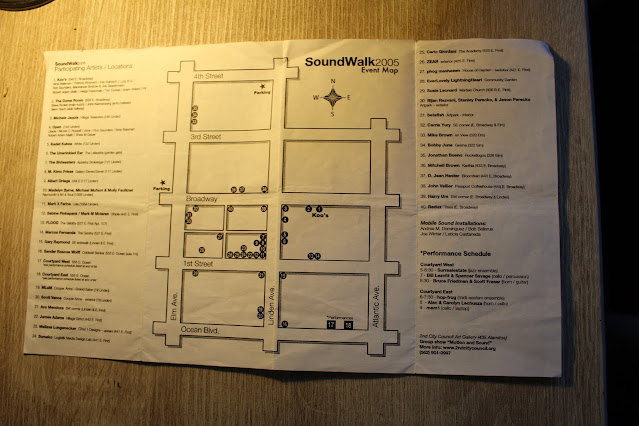I was digging through the bargain bin at Café Oto, the ‘home for creative new music that is outside the mainstream’ and came across an album which seemed to be just for me. It was titled Walk…Stay…by Yan Jun. I hadn’t heard of either the album or the artist but that title meant I had to buy it, so I did. A fiver well spent.
Yan Jun, I now know, is a Chinese musician, poet and occasional ‘dancer’ who uses noise and field records, and has been known to say, ‘I wish I was a piece of field recording.’ Well, don’t we all?
Walk…Stay…has 8 untitled tracks, and I’m quoting from the album notes here, ‘Tracks 1, 3, 5, and 7 were Recorded by Yan Jun in Liulichang and Dongsi Beidajie, Beijing; Zhujiajiao, Shanghai; and Lashihai, Yunnan, walking with an Edirol R09 digital recorder in hand. Yan Jun suggests you listen to them while taking a walk.’The other tracks are ‘sound fragments ... Most of them are residue from editing. Some are recording disorders. Yan Jun suggests you listen to them while taking a break, sitting, lying down, or daydreaming.’
Well, the CD soundsmuch as you might expect: voices, street noise, distant unidentifiable drone and whines – but you know it’s really quite listenable. I can't find any pictures of Yan Jun walking, but here he is sitting at a desk making noise.
Sound walks now seem to be everywhere, they may even be a ‘thing.’ I understand the term was first used by members of the World Soundscape Project led by R. Murray Schafer in Vancouver in the 70s. The first one I went to was in Long Beach in 2007. I still have the CD and even the map:
Roden, I understand, is a proponent of ‘lowercase music,’ a name that speaks eloquently for itself. I can’t say how much of a walker Roden is, though his blog, not updated recently, makes various references to walking and he quotes John Cage on elevator music ‘perhaps you did walk around inside of it (the music in the elevator): the architecturality of music is now a technical possibility and a poetic fact.’
 |
| Steve Roden |
In more recent times I remember, during lockdown, an online performance by Carl Stone and a couple of other performers that involved ambient sounds recorded in Tokyo. Of course, I can’t find it now. But I do know that when Stone was first in Japan in 1988/9 he collected many hours of city sounds, that became the basis for his piece Kamiya Bar.
And do I know from Stone’s Instagram feed, that he does a lot of walking around Tokyo at night, and I understand he still takes his mobile recorder with him. And here is walking, though not in Tokyo and not at night.




















